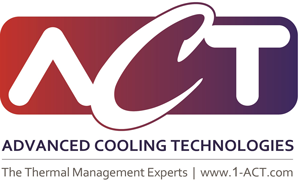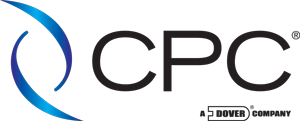Thermal Live Fall 2024
Now Available On Demand
The Thermal Live Fall Experience
Did you miss any part of our fall event? We’ve got it all prepared for you. Electronics Cooling brought together industry experts in thermal management for two days of technical sessions and product demos. Presentations covered the latest in liquid cooling and active and passive thermal management solutions.
Find out what you missed!
Agenda
Webinar | Introduction to Pumped Refrigerant Direct to Chip Cooling | Boyd
Joe Marsala, Boyd Fredericksburg
There is a growing interest in using pumped refrigerant to cool IT loads across various hardware platforms. This webinar will examine some of the basic first order engineering considerations necessary when evaluating pumped refrigerant as an option. We will focus on how pumped refrigerant thermodynamic cycles are represented on pressure-enthalpy diagrams and discuss choice of refrigerant. The four basic components of a pumped refrigerant cycle: refrigerant pump, cold plate array, condenser and reservoir will be presented using the example of a pumped refrigerant cooling system.
Webinar | Inside or Out? Responding to Liquid Cooling Design Challenges of Various Ambient Conditions | CPC
Andres Abraham, Applications Engineering Manager, Thermal Business Unit at CPC & Dylan Osiecki, Applications Engineer, Thermal Business Unit at CPC
With a growing number of sophisticated computing and energy operations occurring in myriad and sometimes harsh environments, it’s important to understand how ambient conditions affect liquid cooling systems and their component parts. This webinar will highlight the challenges of designing and specifying components given the ambient environments of edge computing, hyperscale computing, green energy equipment and electric vehicle fast-charging systems. Learn how to understand quick disconnects & their material makeup and their associated performance characteristics given temperature, humidity, air quality, and exposure variances. You’ll come to better appreciate how and in what ways environmental factors should influence system component and subcomponent selection.
Demo | Pioneering Thermal Management: Next-Gen Gap Fillers for Automotive | Henkel
Kevin White, Product Development Manager, Henkel
Discover Henkel’s latest innovation in thermal management for automotive electronics—our next generation gap filler designed to address evolving industry challenges. Learn about its advanced properties, including superior thermal conductivity, excellent electrical insulation, and robust mechanical performance. Gain practical application tips and real-world case studies to enhance the reliability and efficiency of automotive electronic systems. Join a Henkel expert, instrumental in formulating these next-generation gap fillers, for particularly insightful discussions.
Webinar | ASIC Warpage and Thermal Interface Materials | Henkel
Matthew Bren, Scientific Associate PD and Research, Henkel Corporation
This webinar will explore the challenges associated with warpage in ASIC (Application Specific Integrated Circuit) devices, its effect on performance, and the implications and considerations for thermal interface materials (TIMs). The potential problems with high warpage will be defined, its causes examined, and its effects on thermal management and reliability analyzed. Uniquely, specific TIM formulations are engineered to address the effects of warpage, and the presenters will detail TIM design strategies that may enhance performance and durability to help optimize ASIC operational stability and longevity.
Demo | Guide to Selecting the Right L2L and L2A CDU | Boyd
Michael St. Jean, Applications Engineer, Boyd Corp
Boyd’s Coolant Distribution Units (CDU) are specifically designed to cool current and future AI loads within liquid enabled data centers where energy efficiency, redundance and operation stabilization is critical.
During this product demo, we will discuss the different liquid-to-liquid (L2L) and liquid-to-air (L2A) CDUs that Boyd offers. We will deep dive on the ROL1100, an in-row CDU with a cooling capacity range of 550 to 1100 kW with typical approach temperatures to support multiple server racks. With many advanced features, including redundant hot swappable pumps and a sophisticated monitoring system, the ROL1100 has the performance, reliability, and versatility needed for today’s data center environment.
Webinar | Cooling the Future: Innovations in Data Center Thermal Management for AI and Cloud Computing | ACT
Kimberly Mankosa, Lead Sales Engineer, ACT
The data center cooling solutions market is rapidly evolving, driven by the growth in artificial intelligence (AI), cloud computing, and digital transactions. As data centers expand, efficient thermal management becomes crucial due to the rising power densities and significant power consumption associated with cooling systems. Traditionally dominated by air cooling, the industry is now seeing a shift towards advanced technologies such as liquid cooling, Pumped Two-Phase cooling, and hybrid solutions, which offer enhanced thermal management capabilities. This webinar will explore the latest trends in Direct to Chip (D2C), Rack and Room Level, and Edge Computing cooling strategies, highlighting the benefits and applications of air, liquid, Two-Phase and hybrid cooling systems.
Demo | Thermal Interface Material and Underfill Compatibility with Liquid Immersion Cooling Formulations | Henkel
Stone Wang, Lead Application Engineer, Henkel Corporation
As data center servers have become power-dense to enable AI and HPC technologies, more than air cooling approaches are needed to meet GPU modules’ heat reduction demands. Liquid immersion cooling has emerged as a robust technique to manage the heat generated by servers and server racks. Also vital to server performance optimization is cooling AI and HPC semiconductor devices at the heat source and defending delicate package interconnects from the effects of warpage. Typically, heat dissipation is achieved with thermal interface materials (TIMs) and cooling plates, while underfills are employed to protect chip and package interconnects from thermally induced mechanical failure. Because liquid coolants may come in direct contact with TIMs and underfills when servers are submerged, comprehensive material compatibility must be better understood. Any degradation of the on-device materials may cause sub-par performance or complete failure.
This webinar presents the results of a study that assessed the compatibility of GAP PAD, gap fillers, and underfill encapsulants with some of the market’s most common immersion cooling formulations. The project analyzed multiple TIM and underfill material properties after being submerged in liquid coolants for different periods of time. The impacts on material properties such as weight change, thermal reliability, and voltage breakdown will be discussed. Following the presentation, technical experts will take questions during a live webinar Q&A.
Webinar | Sustainability Impact of Thermal Encapsulants – Part 2 | RECOM
Steve Roberts, Innovation Manager, RECOM Power & Patricio Cantu Sanchez, Product and Project Manager, RECOM Power
Webinar | Take a Chill Pill: Unique Applications for Thermoelectric Technology | Sheetak
Brandon Noska, Director of Application Engineering, Sheetak
Thermoelectric devices are used in a variety of cooling and energy harvesting applications. In this webinar, we will dive into three different thermal management and energy harvesting needs where thermoelectric technology is already or on the cusp of being used: portable cooling, compact thermal test systems and industrial waste-heat recovery. We will discuss both traditional and thin-film technology for these use-cases.
Demo | Passive Thermal Management Solutions for Telecom and Datacom Applications | Henkel
Rita Mohanty, Sr. Scientific Principal, Henkel Corporation
The demand to improve the speed and performance of electronic devices in the telecom and datacom industries has increased the power density of semiconductor devices beyond what was conceivable merely a decade ago. Today, it is common to see high-power devices such as ASICs and FPGAs with package sizes larger than 70 mm X 70 mm and power densities greater than 100 W/cm2. In addition to higher power, these devices operate with high-frequency power cycles. Elevated power density combined with high-frequency cycling causes the temperature to rise beyond the operating thresholds of the semiconductor devices. To achieve the functionality and reliability required of these devices, proper thermal management must be employed. This webinar will present some of the passive thermal management solutions that are helping current and future telecom infrastructure gear, data center switches, routers, and servers meet demanding performance and reliability requirements.
Webinar | Challenges in Thermal Gap Fillers for Immersive Cooling | Fujipoly
Christian Miraglia, Applications Engineering Manager, Fujipoly America – Customer Engineering Resource Center (CERC)
Join us for an in-depth exploration of the role of thermal gap fillers in immersive cooling systems. This webinar will present findings from our recent studies, which show that current gap fillers face challenges under immersive cooling conditions, echoing feedback from our customers. We will explore the factors contributing to these challenges and discuss potential solutions. Attendees will gain valuable insights into why existing gap fillers are not fully meeting the demands of immersive cooling and learn about our ongoing development efforts aimed at addressing these issues.
Webinar | Connecting IC Design to Package and PCB Thermal Analysis Securely in the Supply Chain | Siemens
John Wilson, Electronics Thermal Technical Specialist, Siemens
Modern 2.5 and 3D IC multi-die package applications have complex structures and heat flow paths requiring careful thermal management to avoid issues with performance and reliability. Power and thermal influences are advantageous to consider earlier within the IC designers workflow. Thermal engineers support IC designers downstream in the packaging of ICs. Semiconductor OEMs are, in turn, challenged to provide accurate transient thermal models to their clients to aid thermal design at PCB and system modeling levels but must protect valuable IP.
This presentation provides a brief overview of a thermal tool for IC designers and focuses on the workflow for collaboration with thermal engineers using dedicated thermal analysis tools to create a detailed IC package model. To address the need for secure, shareable thermal models in the electronics supply chain, a new technology for creating 3D CFD-ready reduced order thermal models is described. These models can be shared with confidence as all internal geometry and material data is protected and impossible to reverse engineer. Embeddable BCI-ROMs (boundary condition independent reduced order models) are compared to existing 2R and DELPHI approaches and an example of how to use them is illustrated for a PCB thermal analysis study.
Thermal Live Fall Sponsors
Master Sponsor

Master Sponsor

Thank You to Our Sponsors






Thermal Live Updates
Stay updated as new presenters join, and the agenda is developed. Sign up with your email now.
Share Your Expertise, Lead the Discussion
Do you want to establish yourself and your company as a thought leader in the field of thermal management, or maybe you have a new product you’re eager to share with your industry peers?
Presenting at Thermal Live gives you the opportunity to share your expertise with an audience of hundreds of engineers and other professionals. Promote your products or innovations and generate sales-qualified leads. Learn how to become a presenter today.